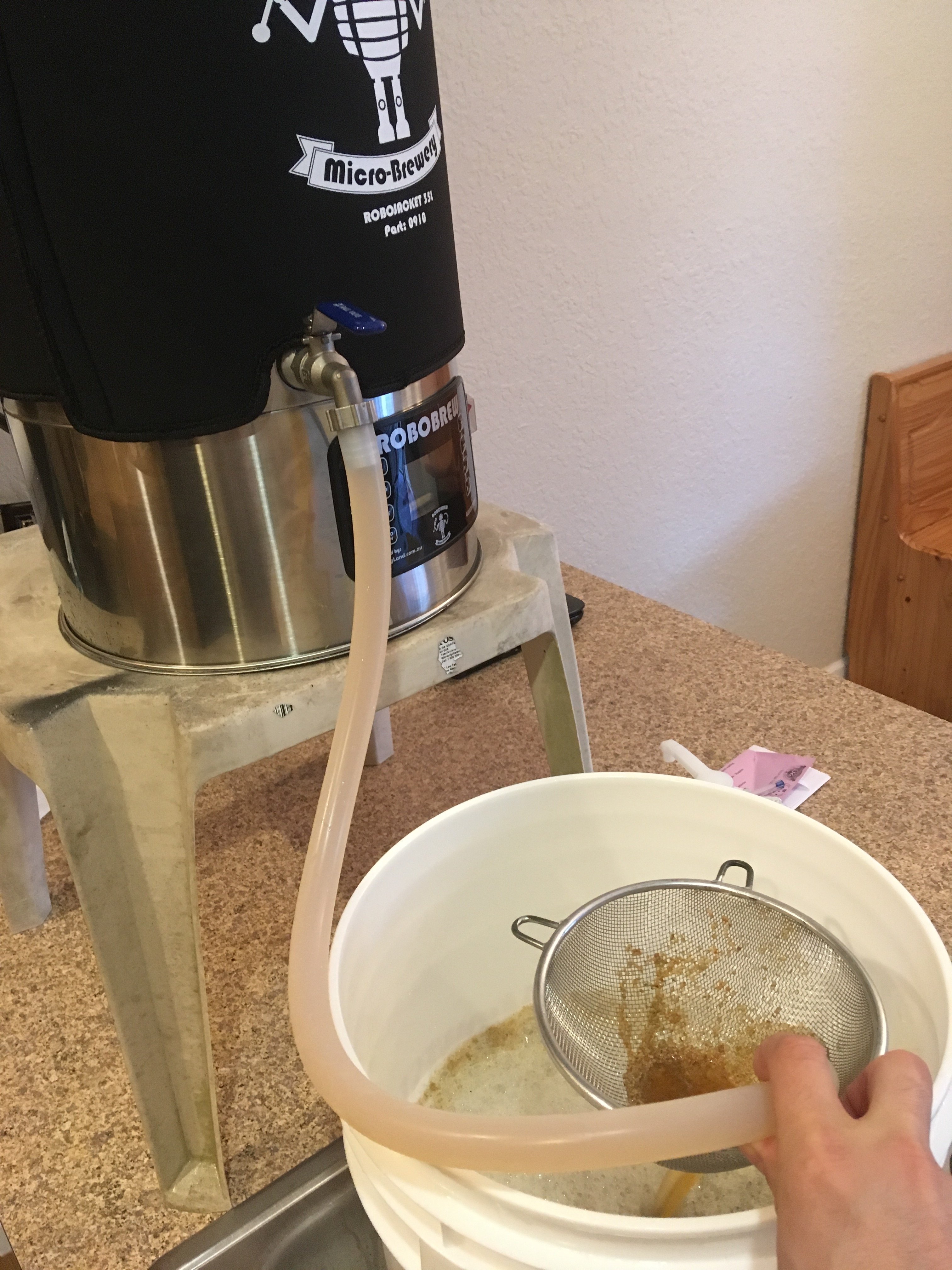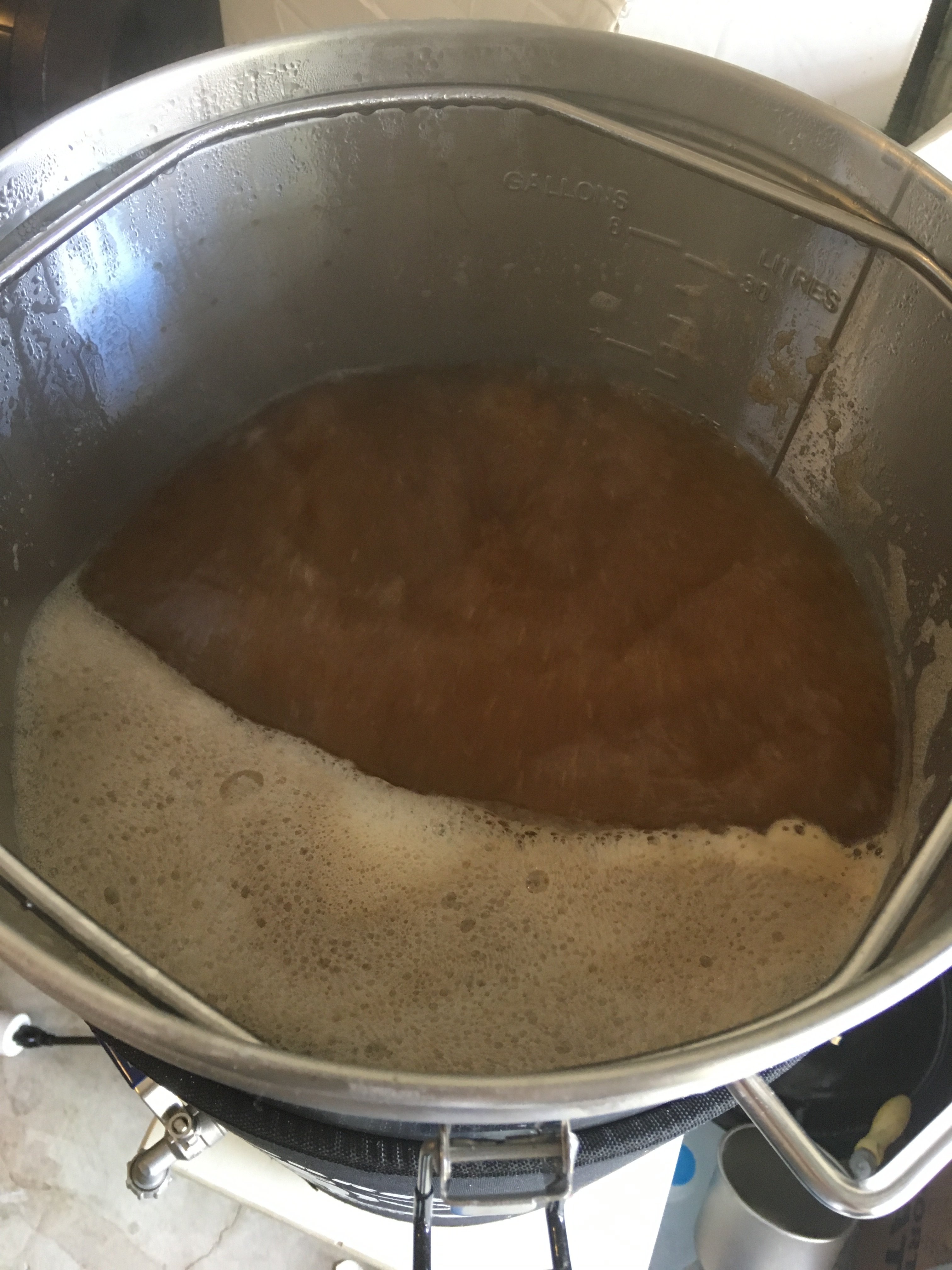I have a Grainfather, which is pretty much identical. While these systems function quite well straight out of the box with no extra considerations there does seem to be a bit of a learning/tweaking curve to get the smoothest and easiest brew day out of them.
If you are using the Grainfather calculators for your Robobrew I don't think mash thickness is a problem as the dead volume already seems to be accounted for. I haven't experienced an overly thick mash using their calculator.
When I started using my system I got a lot of particulates going through the false bottom, like in the OPs picture. This was solved by adding a fine SS mesh screen on top of the false bottom. This is the only physical hack I have made to my system.
I used to just mill my grain then mash-in by adding the milled grain into the Grainfather and stirring. Sometimes I found I was unseating the false bottom a little bit with the stirring, which contributed to grain escaping the grain pipe. Also, even with stirring and recirculation I was having issues with inconsistent efficiencies, which I eventually discovered was due to small dough balls that are hard to break up when stirring in the grain pipe with that overflow pipe in the middle. This was solved by spending an extra 2 minutes conditioning the grain prior to milling and, rather than milling into a bucket and pouring the grain into the Grainfather, I mill right into the grain pipe then gently lower this into the mash water. Its basically like underletting. This is so effective I don't even have to stir. Sparges are a breeze because the grain conditioning prevents the husks from being shredded while milling, resulting in a grain bed with better flow properties. Best 2 minutes spent ever. Efficiencies increased and became super predictable. I wish I had come across these simple processes modifications right away. Some or all of these really simple things might help with your Robobrew.
I have done BIAB in my Grainfather - it was simple and effective and clearly others are doing it with the Robobrew. For what it is worth, however, I think it eliminates the strength of these systems when used with a pump. With a recirculating pump it is a lot easier to hold the temperatures steady and even throughout the mash. Perhaps the importance of this is debatable. But a recirculating pump makes adding temperatures steps into your mashes super easy - just dial in the new temp, no stirring necessary, no hot spots.
Just some thoughts for you. Hope they help. Cheers.




